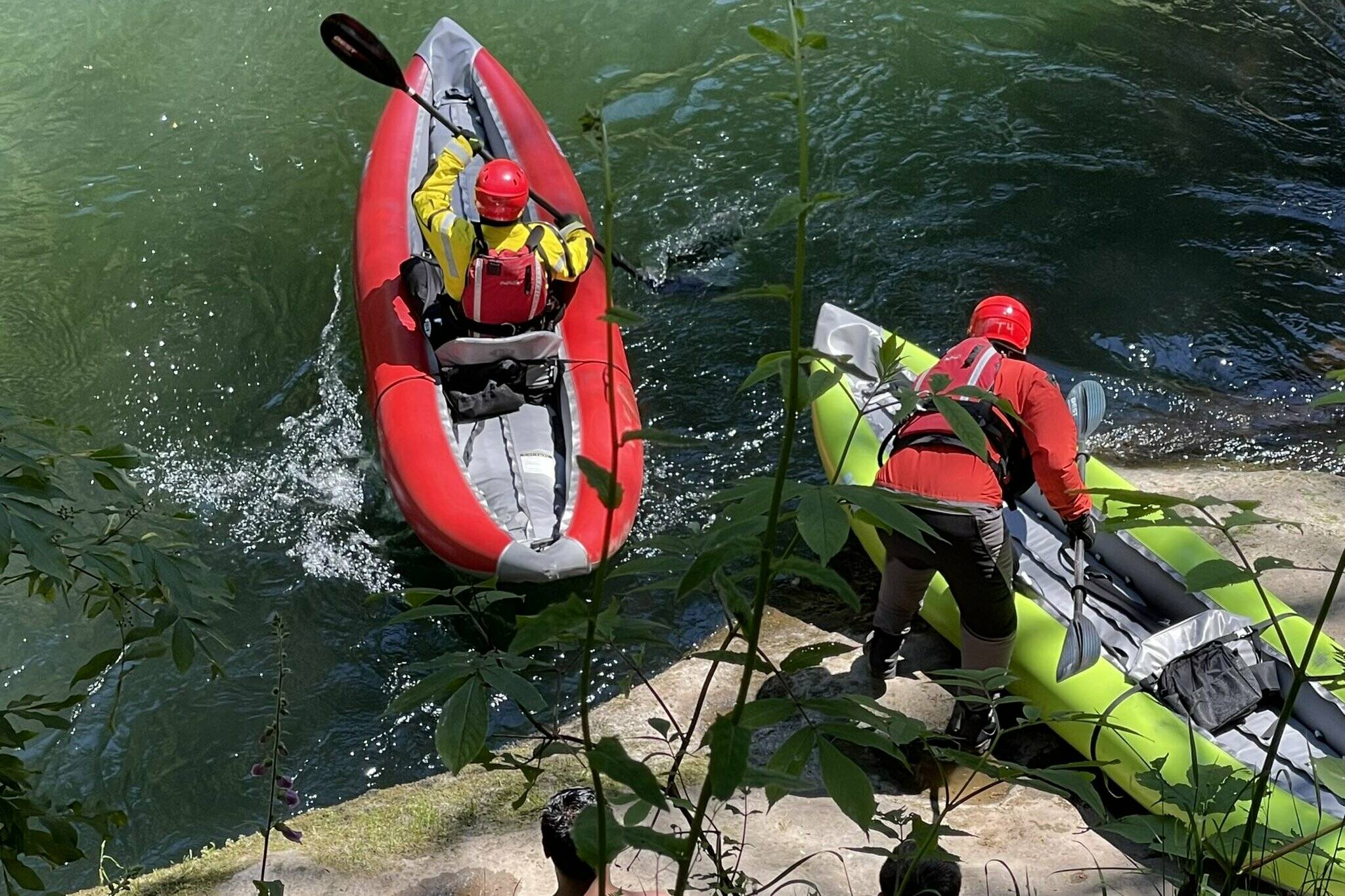A 20-year-old swimmer is missing and presumed to have drowned at the Green River Gorge after he was swept away by the river’s current Saturday afternoon, June 25.
Search and rescue units from at least seven agencies sped to the area in the 29500 block of Green River Gorge Road, near Black Diamond on June 25. Two people out swimming had become swept up in the river’s current and were calling for help around 1:30 p.m., according to Kent-based Puget Sound Regional Fire Authority Division Chief Pat Pawlak.
One of the swimmers managed to reach safety, but the other could not be rescued despite efforts of several young adults who tried to reach him, Pawlak said. It does not appear that the swimmers were using flotation devices, Pawlak said.
Search and rescue efforts included four kayaks from the fire agencies, another kayak from the King County Sheriff’s Office, and scans from the Sheriff’s drone and Guardian 1 helicopter. Despite those efforts, the man could not be found.
By 5 p.m. Saturday, officials jointly decided to suspend the search. The man is now considered missing and is presumed to have drowned. The case is now under the Sheriff’s Office’s control.
Unfortunately, this time of year has historically been extremely dangerous for swimmers and others out on the water.
The first real heat wave of the summer hit Western Washington this past weekend, with temperatures reaching 90 degrees. A heat advisory was in place lasting through the evening of Monday, June 27. Temperatures are forecasted to drop again this week — but this is unlikely to be the last heat event of the summer.
In general, hot temperatures mean you should drink plenty of water, stay out of the sun for long periods and take extra caution for relatives, neighbors, young or elderly people and pets. Never leave a child or animal unattended in a vehicle in this kind of heat, and be aware of the signs of heat exhaustion and heat stroke.
Despite the warm sun, the water in local waterways including rivers, lakes and beaches is colder than usual because of the large snowpack and cold spring temperatures.
Pawlak shared three key points for water safety:
• 1: Know your limits. It’s hard to judge distance in the water, and the frigid water can quickly sap your strength and leave you too tired to return to shore.
• 2: Remember that rivers can have fast-moving currents despite appearing placid. In rivers and lakes, hidden dangers like log jams or rocks can snag you.
• 3: Always wear a personal flotation device.
“I just think that people need to be really vigilant when they’re around water,” Pawlak said. “If you’re a parent and you have a kid around water, make sure you’re actively watching them — your eyes are on them. You don’t want to be on your phone, or reading a book, because people can get into trouble rather quickly in water and slip below the surface.”
The mid-June central Cascade Range snowpack was 300% more than normal and snowmelt was still being added to local rivers as of June 21, according to the King County Department of Natural Resources. In addition to lower water temperatures, the larger than normal snowpack means rivers are running higher and stronger than usual, creating more hazards for swimmers.
“We know rivers will run cold and fast well into summer, and lakes will stay cold longer than normal, which can all be deadly for people who are unprepared,” Public Health’s Violence and Injury Prevention Manager Tony Gomez said. “Washington waters are often cold enough to cause cold water shock, even on a hot summer day. Cold water can quickly weaken even the strongest swimmer.”
Last year there were 29 preventable drownings in King County alone, and 15 of them were in open water — and most could have been prevented by a life jacket, according to the King County Department of Natural Resources.
The county recommends people wear life jackets when swimming at a body of water where a lifeguard is not present.
“A drowning does not look like a drowning you see on TV or in the movies,” said Sgt. Richard Barton of the King County Sheriff’s Marine Rescue Dive Unit. “People are not flailing around or splashing the water. They are doing the dog paddle and not moving or gaining forward momentum. So, if you see this action, do something, reach out to them with anything, a pole, a towel, an ice chest. If they are farther out, throw something to them like a rope or a life jacket of some sort. And please, wear a life jacket. I responded to seven drowning incidents last season. They were all preventable if the person had just worn a lifejacket.”
Reporter Henry Stewart-Wood contributed to this article.
Talk to us
Please share your story tips by emailing editor@kentreporter.com.
To share your opinion for publication, submit a letter through our website https://www.kentreporter.com/submit-letter/. Include your name, address and daytime phone number. (We’ll only publish your name and hometown.) Please keep letters to 300 words or less.

